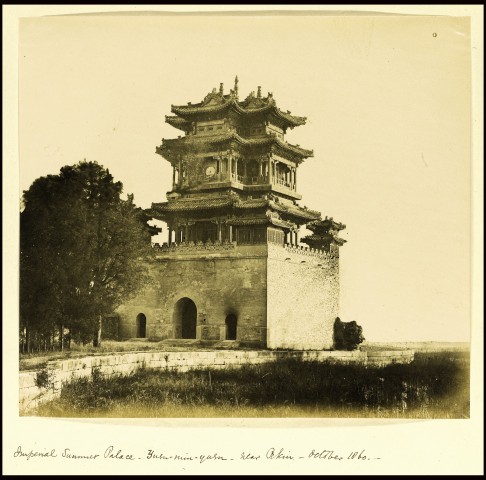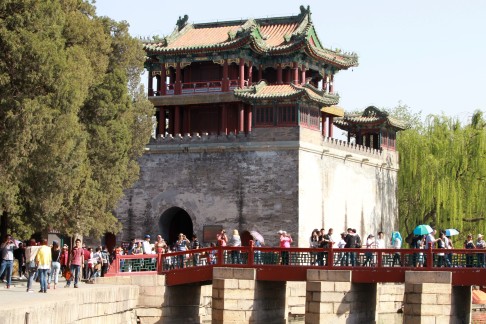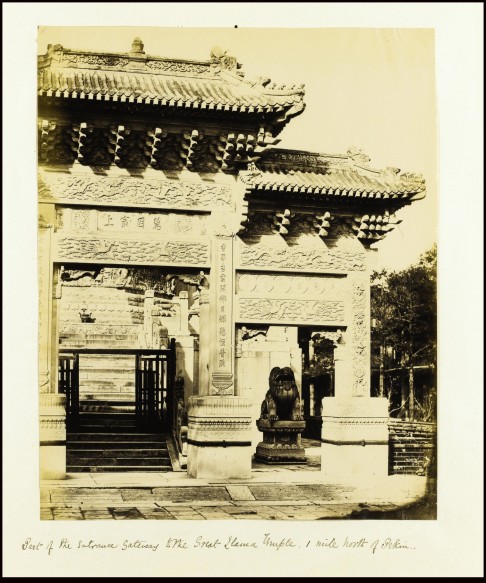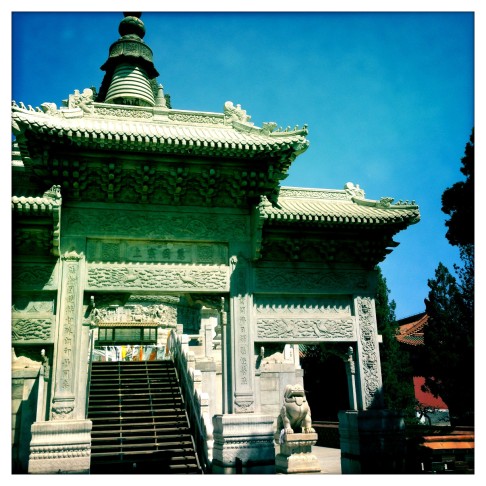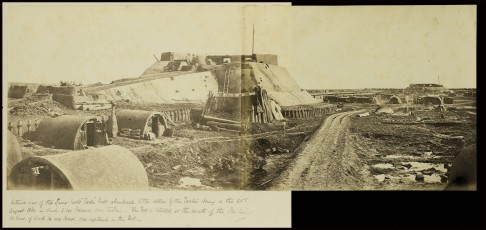
Rare Felice Beato photos of old Peking and a lost China to be auctioned in London

An album of some of the earliest photographs ever taken of China and imperial Peking goes under the hammer in London next week.
Taken by Anglo-Italian photojournalist Felice Beato in 1860, the 18 rare images depict a never-before-seen panorama of the capital and the only known image of the Summer Palace before it was torched by British and French troops shortly afterwards.
Because of the photos’ rarity, auctioneer Sotheby’s expects the collection to attract £200,000 (HK$2.4 million).
In recent years, early photos of China have become valuable as collectors recognise their significance, said Richard Fattorini, director of Sotheby’s department of books and manuscripts. The Beato images are among the finest examples, he added. An album of early China photos by Scotsman John Thompson made nearly £350,000 in Sotheby’s last sale; it was estimated at £70,000 to £100,000.
Beato’s panorama of Peking is composed of six photographs skilfully pieced together to show the city from east to west looking north. It reveals a vanished landscape: a Peking (now called Beijing) of low curling roofs and trees from 150 years ago, a century before the arrival of glass skyscrapers.
The panorama, in its entirety, is 168cm wide and 20cm tall and was shot from the tower at Peking’s South Gate looking north towards the Forbidden City.
Map: Where were these rare photos taken, and what do these places look like today?
View Felice Beato's photos of China in a larger map
The Beato collection also includes images of the old Winter Palace and imperial Summer Palace, part of the emperor’s private estate, days before the British and French armies burned it down in 1860. Artefacts involving the Summer Palace have been of interest for China in recent years, as the government has campaigned to recover looted bronze sculptures in a bid to overcome a history of foreign bullying during the second opium war.
Other photos in the Sotheby’s collection depict the Tung Chow Pagoda (also known as the Randeng Pagoda), Temple of Heaven, Pehtang, the captured North Taku Fort at the mouth of the Peiho river, the tomb of a Chinese empress near Peking, the gateway to the Xihuangsi Temple and British army officers. All were taken in the summer of 1860.
Beato is thought to be the first photographer to visit Peking. His photos “are of huge historical significance – they are among the first photos ever taken of Beijing and ... provide a fascinating insight into a lost time”, Fattorini said.
“His is the first-ever 180-degree panorama of Peking, and I have only traced three other examples in collections. None have come up at auction before,” he said.
Beato “was a specialist in taking panoramic photographs, and one day he got up onto a wall overlooking Peking towards the Forbidden City and took an incredible panorama”, Fattorini said.
“At the time it would have been incredibly difficult to do.”
Beato was a pioneer of his time, a forerunner of the modern jobbing freelance photojournalist. He embedded himself with the British Army during the opium war, documenting soldiers’ endeavours and his travels. To fund his trips, he sold his images to the army officers, who were eager to acquire photographic records of their foreign adventures, Fattorini said.
In 1857, Beato joined up with the army in India to photograph the uprising before moving on to China. He snapped images of daily army life, as well as of landscapes and historical buildings wherever he went. He journeyed from Canton (Guangzhou) to Dagu in northern China and then to Peking, said Fattorini.
Beato was also technically advanced and did his processing in the field. The set of 18 images on the auction block was sold to a young British army lieutenant while he was in China. The officer, Lieutenant Edward Henry Courtney of the Royal Engineers, had bought the photos only days after they were taken.
After China, Beato worked and travelled with a writer from the Illustrated London News, visiting Hong Kong, Shanghai, India and Tokyo.
When Beato returned to London, his other photos received critical acclaim, being the first images of China most Europeans had seen. Short of cash, Beato sold 400 pictures to a London commercial photographer who made prints from the originals.
The Peking collection is of exceptional value because they were one-offs, original prints from the original glass negatives, said Fattorini.
They are also unusual in that they are large prints during a time when photos could not be enlarged.
The images are also all meticulously captioned by Courtney, who recorded the date, place, people and event in impeccable handwriting. Some photos also feature Beato’s writing in pencil on the back, said Fattorini.
The collection was passed down through Courtney’s family after he retired in 1887 and returned to England, where he died at Gerrards Cross in Buckinghamshire in 1913. It ended up in a private collection. The collector wished to remain anonymous, Fattorini said.
Early China photos by Felice Beato and John Thomson taken in Formosa (Taiwan), Guangdong, Shantou and Amoy (Xiamen) from 1870 to 1872 will also be included in Sotheby’s Travel, Atlases, Maps and Natural History sale in London on May 14.
Photo gallery: Tianjin and Beijing, then and now compiled by Simon Song
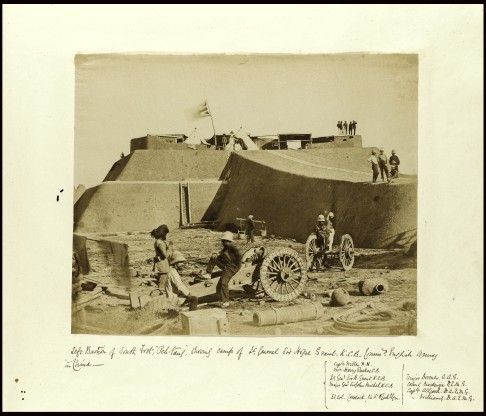

New developments on the tidal flats near Beitang, or "Peh-Tang", in Tianjin's Binhai New Area. Photo: Zhgundam

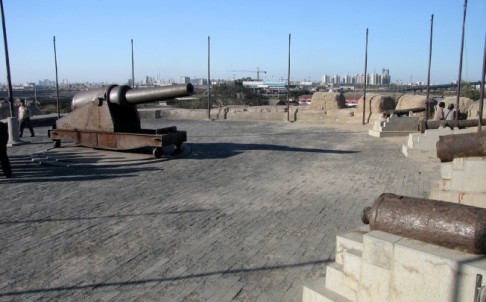
Wenchang Tower, Summer Palace, Beijing
This magnificent lakeside tower in the Summer Palace, or Yiheyuan, was destroyed by the Anglo-French troops shortly after Beato took this picture. The Qing government rebuilt the Summer Palace between 1886 and 1895, but was never able to restore the glory of the Wenchang Tower. The rebuilt structure had only two storeys, instead of the original three, due to lack of funds.
Beato, or Courtney, apparently confused the Summer Palace with the Old Summer Palace, known as Yuanmingyuan, or "Yuen Min Yuen" in Courtney's original caption. Most of the Old Summer Palace still lies in ruins today.
This panorama, consisting of six photos, was taken by Felice Beato in 1860 from then Peking's South Gate, looking towards the Forbidden City. The South Gate was torn down by the Communist government in 1954 to make room for the expansion of Tiananmen Square.
A panoramic view of the southern part of Tiananmen Square, looking north from Zhengyangmen (Zhengyang Gate) in Beijing on April 30, 2013. The view of the Forbidden city is now blocked by Mao Zedong's mausoleum, in the centre. The mausoleum was built after Mao's death in 1976, where old Peking's South Gate used to stand. Photo: Simon Song
Gateway, Xihuangsi Lama Temple, Beijing
Courtney called the temple "the Great Lama Temple" in his caption. Some have mistaken this temple for the famous Yonghe Lama temple, which is still a popular tourist destination in Beijing today. This gateway, along with the Buddhist pagoda behind it, stands today in an amazingly well-preserved condition. The temple now houses a government-run Tibetan Buddhist monastery, and is closed to the public.
